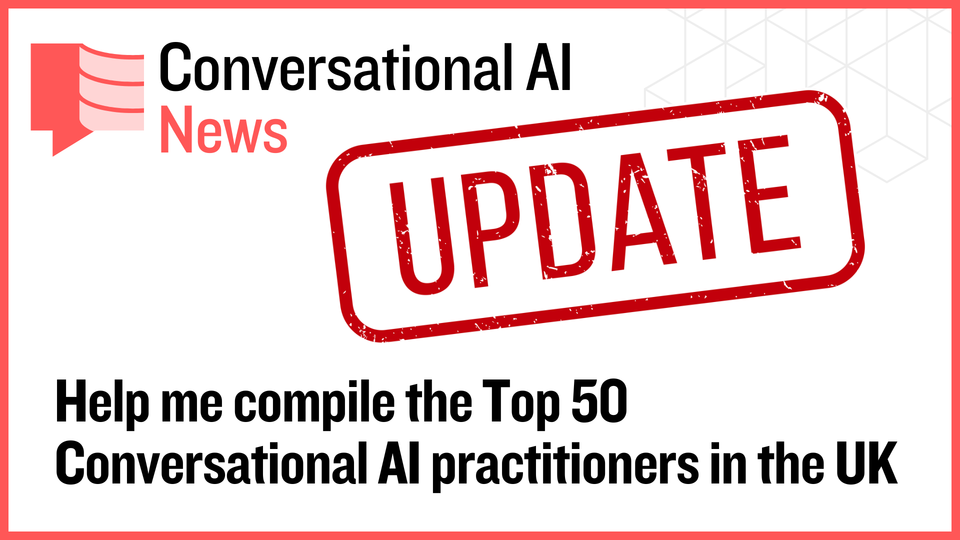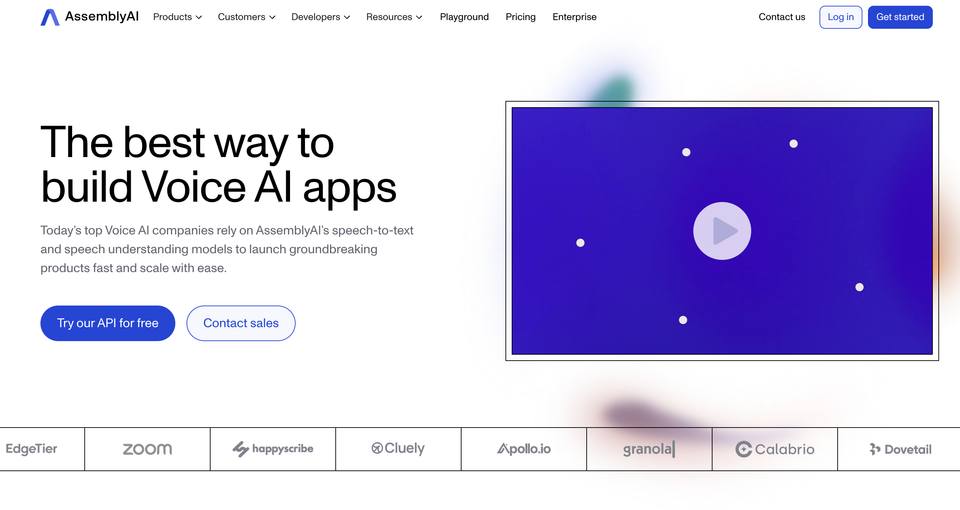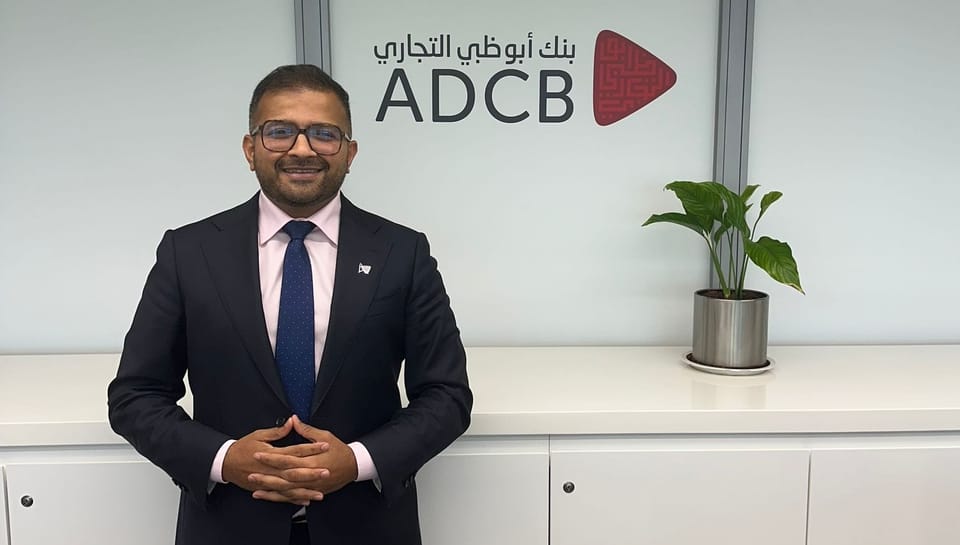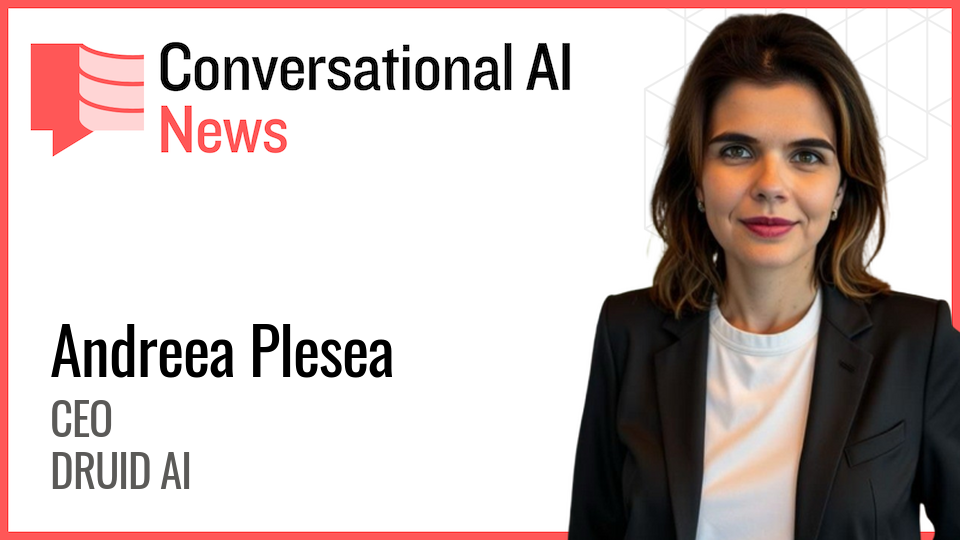Darin Patterson, VP of Market Strategy at Make discusses their AI Agents
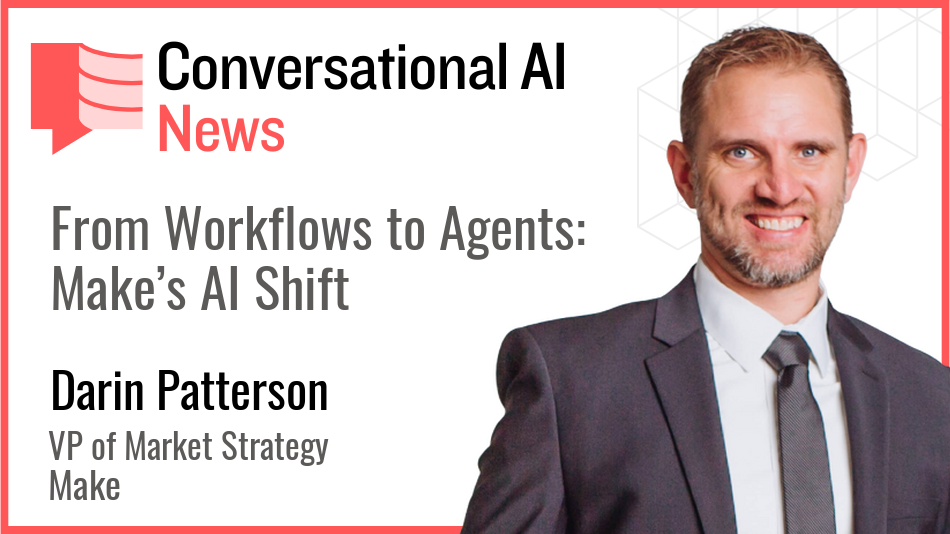
Today we're meeting Darin Patterson, VP of Market Strategy at Make.
I've long been a massive fan of Make, one of the world's best workplace automation services. I currently have 31 Make workflows running at the moment and it's been indispensable to me in recent years. I use it for everything from automating repetitive processes to managing specific workflows here at Conversational AI and over at my other site, FinTech Profile. So when I got the opportunity to pose some questions to Darin, I jumped at the chance.
In the interview below, I asked Darin give us a bit of an overview of Make and tell us more about how they're integrating and uplifting their automation services with AI – and in particular, Make's AI Agents.
Over to you Darin - my questions are in bold:
Who are you, and what's your background?
With a background in Psychology and an MBA from the University of Utah, I've always been drawn to how people work - individually and together. That's shaped how I lead: by connecting strategy with real human dynamics. I focus on bringing clarity to big goals, building alignment across teams, and making sure great ideas actually get delivered.
What is your job title, and what are your general responsibilities?
At Make, I'm the Vice President of Market Strategy, helping to showcase our latest innovations so customers can stay at the leading edge of workplace automation and agility. Day to day, that means working closely across teams to shape how we tell our product story, highlighting real-world use cases, and bringing our vision to life for current and future customers.
Previously, I led Make's Product team as Vice President of Product, where I led our product vision, helped define the roadmap, and scale the platform.
What prompted you to introduce AI powered solution? What specific problems were you trying to solve?
One of the key considerations in automation today is understanding when to use traditional rule-based workflows and when to embrace more adaptive, agentic approaches. Traditional automation is highly effective for well-defined, repeatable tasks, it brings reliability, consistency, and control. But as organisations strive for greater agility, there is a need for systems that can respond to change in real time, make intelligent decisions on the fly, and operate across complex, dynamic environments. The future of automation lies in combining the strengths of both approaches to meet a broader range of needs.
That's exactly what we're solving with the introduction of Make AI Agents. These agents bring intelligent, goal-driven decision-making into our users' automation workflows.
This marks a major shift: Make is expanding its set of capabilities to include the full automation spectrum from traditional automation to agentic automation, allowing smarter and more adaptive workflows. Customers no longer need to anticipate every condition in advance, agents can respond in real time, choose the right tools, and take the right actions based on context.
What sets Make AI Agents apart is how customisable and scalable they are. You can define a global system prompt for consistency, tailor behaviours to specific workflows, and choose the LLM that best fits your use case, including OpenAI-compatible models. And unlike siloed AI tools, our agents can be reused across workflows, offering centralised management and better visibility.
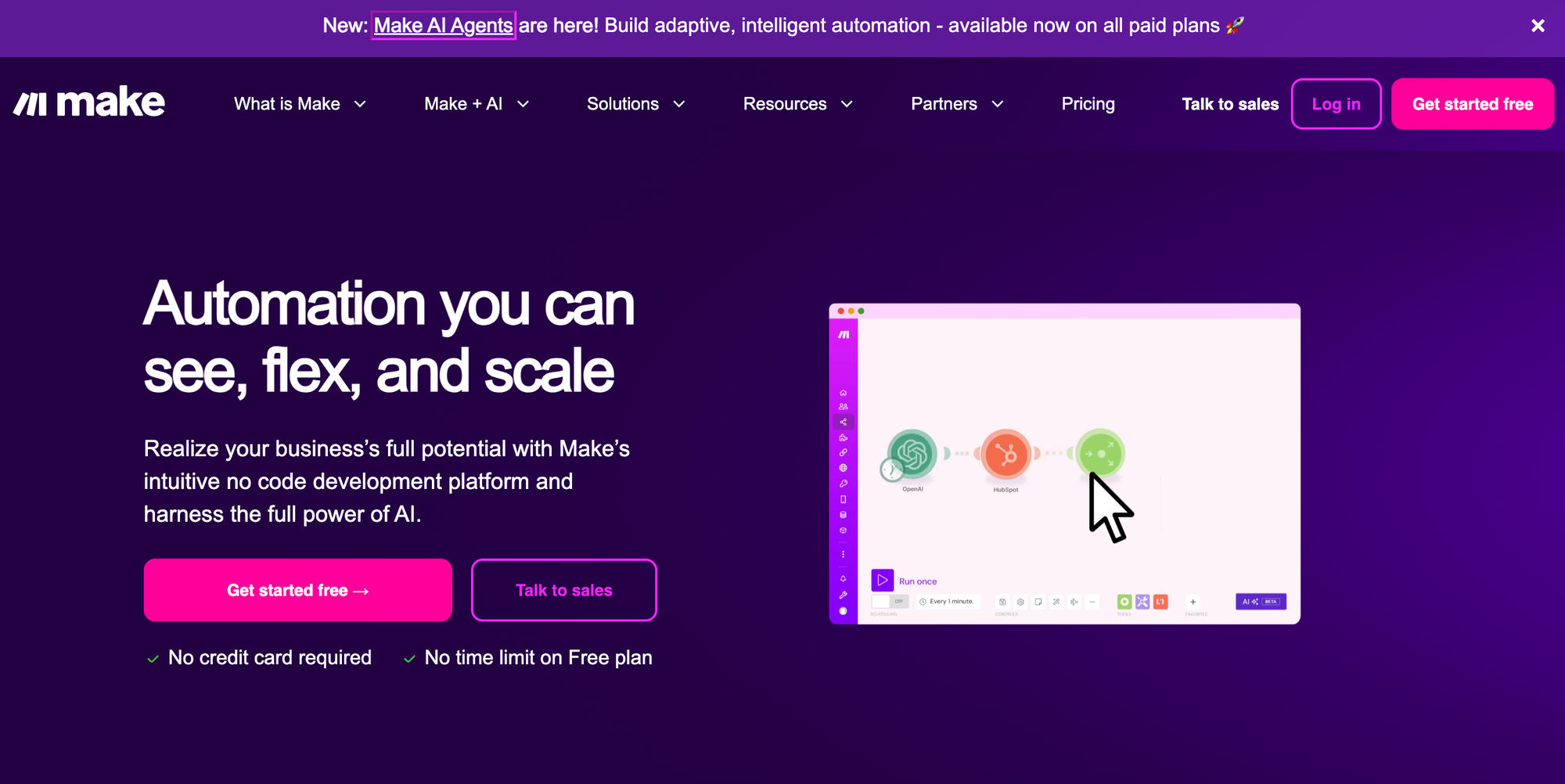
Who are the primary users of your AI systems, and what's your measurement of success? Have you encountered any unexpected use cases or benefits?
Our AI solutions are primarily used by technical teams, automation leaders, and startups who are navigating increasing demands with limited resources, and are pushing the boundaries of innovation. They're tasked with supporting every function of the business, from HR to Finance to Operations, and they're looking for ways to scale quickly, efficiently, and with minimal overhead.
For these teams, success is measured by agility and experimenting: how fast they can respond to change, adapt workflows, and empower other departments without creating bottlenecks. That's where Make AI Agents come in. They help IT teams move from reactive support to strategic enablement, automating routine processes, reducing maintenance, and letting teams self-serve safely within guardrails.
One example we've seen is in HR automation. By giving HR teams access to AI-powered workflows built with Make, IT can reduce manual requests, streamline onboarding or policy changes, and let HR iterate faster, without writing a single line of code. The result? Faster delivery, happier teams, and fewer tickets in the queue.
We've also been surprised by how creatively users are applying Make AI Agents, everything from real-time sentiment analysis in customer support, to dynamic inventory decisions in supply chains. The flexibility of our platform combined with agentic automation is unlocking use cases we hadn't even imagined, and that's a strong signal of long-term value.
What has been your biggest learning or pivot moment in your AI journey?
One of our biggest learnings in the AI journey has been recognising that AI isn't just an enhancement to automation, it's becoming the driver of it. The shift to AI agents is already underway, but what we're really preparing for is something bigger: Agentic automation. In this next phase, AI isn't just a step in the process, it helps define, adapt, and evolve the process itself, working in close coordination with humans.
Now our focus is on making sure AI doesn't just sit in the background, it actively shapes better outcomes, scales responsibly, and stays transparent and manageable for the people who rely on it.
How do you address ethical considerations and responsible AI use in your organisation?
At Make, we have very clear policies, guidelines, and practices that ensure our employees have a strong understanding of the ethical considerations that are critical in deploying AI solutions. Beyond regular training and policy enforcement, we also ensure approval of new AI technologies through our own AI Governance team.
What skills or capabilities are you currently building in your team to prepare for the next phase of AI development?
We recognise the transformative impact AI will have on every aspect of business, and that transformation begins with our own teams. Rather than focusing solely on fixed skill sets, we prioritise talent with the ability to quickly learn and adapt. To support this, we are making significant investments in education and training, empowering every employee at Make to apply AI and automation in their work while fostering a culture of continuous improvement and experimentation.
If you had a magic wand, what one thing would you change about current AI technology, regulation or adoption patterns?
One of the most significant obstacles I encounter, particularly in larger organisations, is the existence of corporate policies or mandates that restrict the use of AI. While there are valid concerns around the safe and responsible integration of AI into business processes, we often encounter exaggerated fears that end up stifling innovation. If I had a magic wand, I would ensure every company had routine, secure access to approved generative AI models, empowering employees to use them across both personal productivity tasks and core business operations.
What is your advice for other senior leaders evaluating their approach to using and implementing AI? What's one thing you wish you had known before starting your AI journey?
The real challenge isn't the technology, it's creating the right environment for it to thrive. There's a fine line between empowering teams and creating chaos. Striking that balance is where leadership really matters.
You need to build an ecosystem that combines inspiration with guardrails, where teams feel trusted to create their own automation, but within a framework that ensures scalability, governance, and impact. That's why we've invested in centres of excellence, shared best practices, and tooling that supports visibility and control at scale.
Culture plays a huge role here. People want to move fast, but they also need guidance. If you don't give them the "how," even the best tools can fall flat. We've learned that enabling teams to succeed on their own terms, while aligning with broader business goals is what really unlocks value.
And of course, ROI matters. Whether it's time savings, cost reduction, or faster innovation, AI and automation need to deliver tangible business outcomes. The good news? With platforms like Make, it's become almost too easy to build the business case.
What AI tools or platforms do you personally use beyond your professional use cases?
I use AI quite a bit in my day-to-day work, though I wouldn't say I've fully automated the repetitive stuff just yet. My current use is more about augmentation than automation. I rely on AI for prepping presentations, tightening communication, especially when aligning expectations across my product team, and summarising meetings with clear actions. Since Market Expansion is also part of my role, I use AI tools to accelerate research, track market trends, and deepen my understanding of emerging spaces.
That said, no two days look the same. Monday rarely looks like Tuesday, and I'm very much still a "human-in-the-loop", collaborating with AI, but reviewing and refining a lot.
What's the most impressive new AI product or service you've seen recently?
Two that really stood out are Invibe and LovableAI. Lovable, in particular, was a mind-blowing experience, it's not fully production-ready yet, but it shows just how far we've come in creating emotionally resonant, deeply intuitive AI experiences. What excites me is how these tools are reshaping roles: product managers can now prototype faster than ever, and content creators are increasingly responsible for layout, design, and delivery – skills that used to span multiple roles. It's not just about new tools; it's about entirely new ways of working.
Finally, let's talk predictions. What trends do you think are going to define the next 12-18 months in the AI technology sector, particularly for your industry?
The next big wave is definitely agentic automation. AI agents are just the beginning, they're how most people will first interact with this shift. But what comes next is broader: it's about embedding agent-like behaviour into core business processes so they can adapt in real time, not just follow a script.
We'll see a spectrum emerge. In some areas, teams will experiment with AI agents to handle tasks, and once they see success, they'll "lock in" those flows. In other areas, processes will remain fluid and dynamic, continuously learning and evolving. The key will be knowing which approach suits which part of the business and building systems that support both stability and experimentation. That's where the real competitive advantage will lie.
Thank you very much, Darin!
And, by the way Darin, just in case you're wondering, producing this post used about 7 different Make workflows - I hope you will approve!
Read more about Darin on LinkedIn and find out more about Make at make.com.

